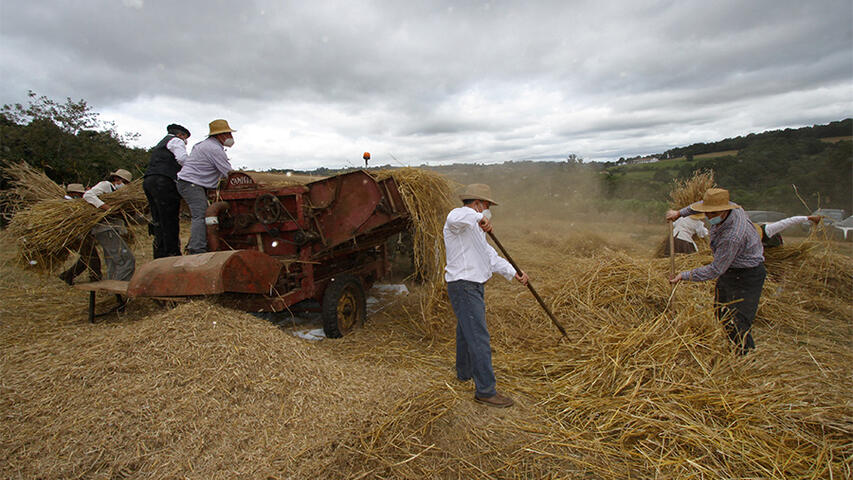Traditional Lalín Mesh
Rye netting, a historical tradition
In August, Lalín revives this ancient work, central to the bread-making process.
The times of the traditional threshing or "malla" return to Lalín every year in August. More than 70 people dressed in period cost umes take part in the historical recreation of this deeply-rooted community work, which was at the peak of the bread-making process. Promoted by the Casa do Patrón Ethnographic Museum, the Festa da Malla Tradicional has been held since 2000 in the village of Codeseda in Lalin on the penultimate Saturday in August and has been declared a Festival of Tourist Interest in Galicia.
The "malla" consists of separating the straw from the grain. The neighbours joined forces in this activity, the most important communal work in Galicia for centuries and vital for family sustenance. The rye was then ground in the river mill and finally cooked in the wood-fired oven. There are several historical methods in the county of Deza, the first being manual, in which the bundles were beaten, and the more modern mechanical methods. Thus, during the Festa da Malla Tradicional (Traditional Netting Festival), the stone netting, which was already practised in the ancient Galician forts, is recreated in chronological order; threshing with a flail; manual threshing; threshing with a machine, motor and winnowing machines; and finally, tractor threshing.
Prizes for the best costumes
The Lalín threshing is a beautiful revival of this tradition that starts with the preparations and goes beyond the work itself to become a great ethnographic, gastronomic and festive day. It begins with the hauling of the bundles and the making of the haystack, accompanied by an exhibition of Galician handicrafts, a complete exhibition of threshing machines and engines, and another of paintings linked to the bread-making process.
The festival includes the recreation, several exhibitions, a fellowship meal and the Serán da Malla with folkloric performances.
Subsequently, the "malla" is recreated with a staging in which the neighbours of Codeseda, in the parish of Doade, and people from other parts of Lalín take part. At the end, the annual prize is awarded to the man and woman best dressed in period costume. This is followed by the fellowship meal in the open-air marquee, with spectacular views of the O Asneiro valley, and in the afternoon the festival continues with the Serán da Malla, in which several folk groups from Deza take part.
From the sowing in April to the baking of bread
The "malla" takes place in a place of great environmental value and represents the central moment of the bread making process, which is reproduced every year by the Casa do Patrón Ethnographic Museum. The process ranges from the sowing of the rye in April, to the binding in July, the threshing in August, the milling and, finally, the baking of the bread.
The festival attracts thousands of visitors to Codeseda, the geographical centre of Galicia, and was declared a Festival of Tourist Interest for the uniqueness and quality of the recreations, the number of participants, the cultural value, the roots of the local population, the infrastructures, the equipment, the innovation, the care of the urban and landscape environment in which it takes place and the degree of dissemination of the event.

